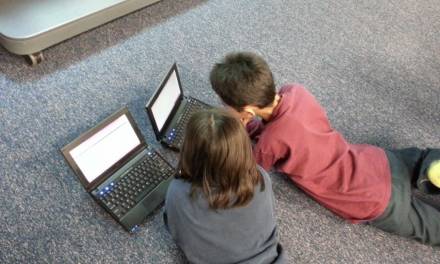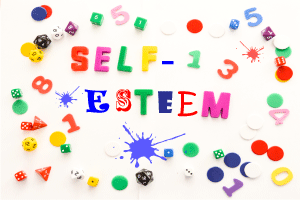Confidence, logical reasoning, a power of persuasiveness – some of the positive strengths developed when practising debating skills – are critical to many career paths.
Yet introducing debating to the classroom (with all the chaos, and loud versus louder voices) does not always lead to a positive, well-reasoned and all-round constructive debate.
Here are five strategies to help you create positive debates amongst students.
1. First things first: Stage a primer debate
Outcome:
Introduce the debate format
Objectives:
Your pupils will…
- Understand the debating process
- Take on a number of roles in the debate
- Learn the rules of debating
- Judge their performance and that of their peers
Materials:
- Printout of rules
- Debate grading matrix for analysing their performance and that of their peers
Overview:
Ask your pupils for ideas as to a topic of debate. Use this to stage a number of introductory debates following this structure (known as the Lincoln-Douglas competitive debate) with time limits for each stage.
- Affirmative position debater presents constructive debate points.
- Negative position debater cross-examines affirmative points.
- Negative position presents constructive debate points.
- Affirmative position cross-examines negative points.
- Affirmative position offers 1st rebuttal.
- Negative position offers 1st rebuttal and closing arguments.
- Affirmative position offers 2nd rebuttal and closing arguments.
2. The Four Corners Debate
Outcome:
This strategy engages pupils in both thinking and moving, and in the process ensures that every student is involved in the debate.
Objectives:
Your pupils will…
- Listen to a statement of opinion on a topic and choose whether they strongly agree, agree, disagree, or strongly disagree with the statement.
- Work in teams to develop lines of argument as to why they’ve chosen to take the position they have.
- Weigh up their stance once they’ve heard new information.
- Summarise their starting point and ending opinion in a short paragraph.
Materials:
- Four signs with the opinions printed out in large lettering.
- A list of considerations for your pupils to help them develop their ideas.
- Paper and pencils for each group.
Overview:
Working in groups representing each of the reactions to the statement, students will list their arguments to defend their opinion of the statement. One or more representatives from each group will then read out and explain their group’s reasoning.
3. Role Play
Outcome:
In this debating strategy pupils will uptake a position of a stakeholder and play a particular role.
Objectives:
Pupils will…
- Analyse a number of issues.
- Understand what the other roles are and why they are each taking up certain positions.
- Analyse their own performance and that of their peers.
Materials:
- Flash cards.
- A choice of topics (you can find a rich source of debate topics here).
Overview:
Prepare roles to be played for each of the topics, allowing pupils time (a suggested minimum of 10 minutes) to develop their arguments as according to their position. Each pupil will present the argument for their role, then listen to each other and write a summary of their own, personal position to close.
4. The Inner Circle, Outer Circle Debate
Outcome:
This strategy progresses pupils onto more advanced skills to develop their listening and reasoning skills in debates.
Objectives:
Your pupils will…
- Listen to each other to reconsider their position.
- Analyse multiple opinions on one issue.
- Develop oral debating skills and impromptu responses.
- Advance their skills in making a strong argument backed up with facts.
Write a position essay.
Materials:
- One chair per pupil.
- Paper and pencils.
- A topic to debate chosen from the following (sourced from The New York Times):
- Are the web filters at your school too restrictive?
- Does technology make us more alone?
- How should parents handle a bad report card?
- Should students be drug tested?
- Is cheating getting worse?
- Do violent video games make people more violent in real life?
- Do we give children too many trophies?
- Should students be able to grade their teachers?
- Should schools put tracking devices in students’ ID cards?
- Do teachers assign too much homework?
Overview:
Pupils should be arranged into four groups…
- Group one will position their chairs in a circle facing out.
- Group 2 will place their chairs around group 1, facing group 1.
- Groups 3 and 4 will position themselves around the perimeter of the circle, facing inwards.
The groups will then discuss the chosen issue for 15 minutes, with the inner circle speaking, whilst the others take notes. From this, all students then choose a position and write a paper.
5. The Fairy Tale
Outcome:
These debates are useful for PSHE classes to discuss honesty, and right and wrong, using the accessible format of three fairy tales.
Objectives:
Your pupils will…
- Listen or read three fairy tales: Puss in Boots, Jack and the Beanstalk and From the Elephant Pit.
- Answer questions about the ethical issues that pertain to them.
- Choose a standing point on an ethical question.
This strategy can be used as an introductory exercise to debate, and could take the form of written responses. You can also adapt the forms of content to ensure that they’re suitable for the age ranges you teach (such as switching fairy tales for TV shows or films).
Materials:
- A printout of the questions.
Overview:
The ethical issues in these debates should be clear and concise and yet offer multiple points of view. For example:
- Puss in Boots: Was Puss in Boots wrong to lie to the king and deceive him? Was the cat wrong to trick the ogre and then kill him?, and Is trickery ever justified?
- Jack and the Beanstalk: Since the giant wanted to eat Jack, was it OK that Jack stole the giant’s goose and harp?
- From the Elephant Pit: Was the hunter better off because he rescued the man from the pit? If yes, why? If no, why not?









